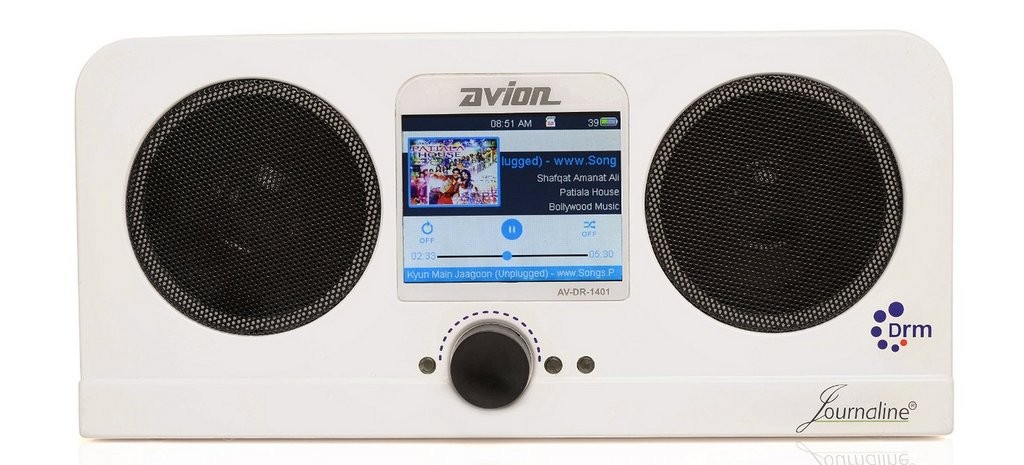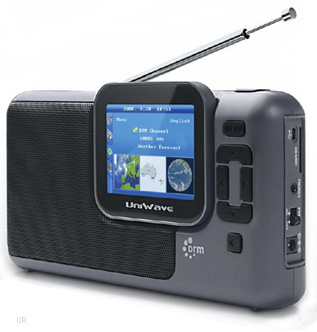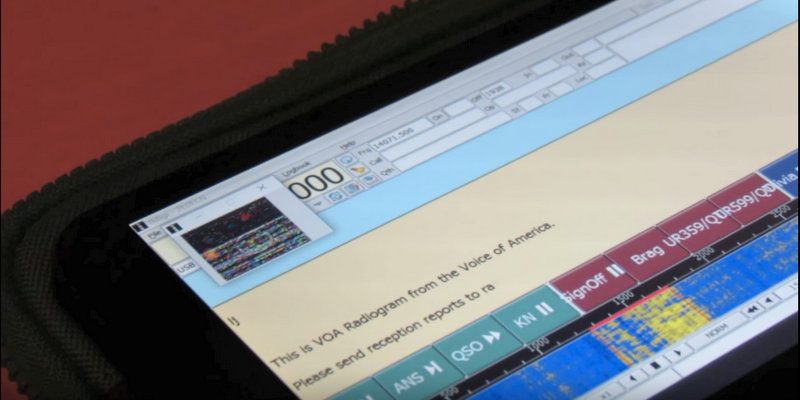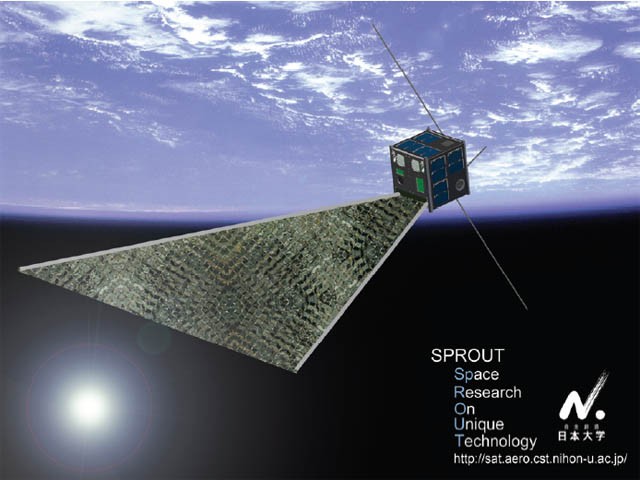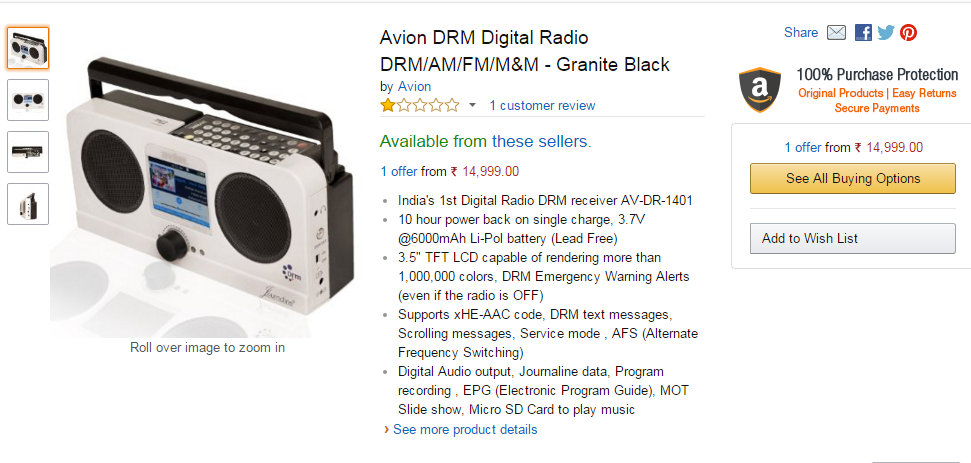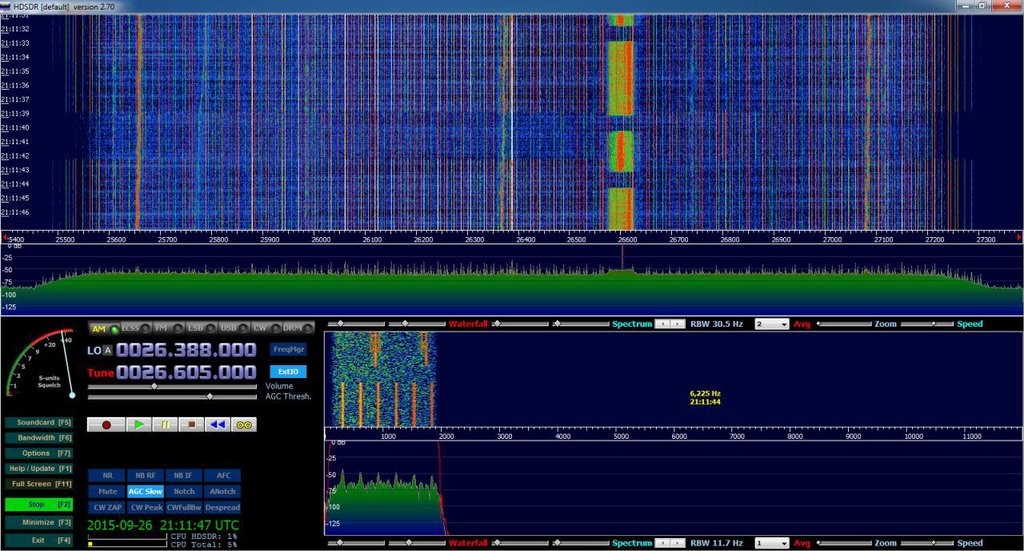Many thanks to SWLing Post reader, Mike Barraclough, for sharing a link to this review of the new Avion DRM receiver by DRM Radio Forum user PhilipOneL. I’ve pasted his evaluation of the Avion below–you can read this, along with the full discussion thread, on the DRM Radio Forum:
I received my Avion AV-DR-1401 this afternoon and have had it up and running for a couple of hours. There is no instruction booklet with it so I am puzzling over the 41-button remote. It is not as user-friendly as I hoped.
First impression: somewhat cheap feel to it. I have put a small bend already in the thin but long aerial. But that is just the outside (handle, volume control, master power switch, and aerial); I hope it works well anyway. But that cheapness hurts when the price of the radio was fairly high to begin with and I paid more than I wanted for a private company to ship it (Fedex).
The radio arrived with its battery fully charged: nice. (But I need to get an adaptor for the AC adaptor’s mains plug which has tubular prongs rather than the North American blade prongs.) I like a lot the fact that it runs normally with its internal battery rather than plugged into mains. This means I can carry it away from noise sources. And it is very carryable — it reminds me of a small 1965-era beach radio in size.
Turned on, it scanned the local FM spectrum well and registered all the local stations. But I cannot get the Scan function to operate on MW and SW, nor in DRM mode. With an outside antenna (8 metre wire) attached, it was able to get the AIR DRM broadcast on 7550 kHz and decode it. It didn’t seem to be able to get enough signal with just the extending aerial.
I have not figured out yet how to make it register a medium-wave, shortwave, or DRM station in its memory; it does not happen when the button labelled “Delete / Store” is pushed. Among the 41 buttons, there is no other likely candidate for that function.
Shortwave sensitivity in AM mode seems to be poor. I was listening, for instance, to ERT Greece on 9420 on the three receivers now on my desk: Satellit 750, MorphyRichards 27024, and the Avion DR-1401, each in turn connected to the same outdoor antenna. The MR27024 produces the best sound and greatest s/n ratio. It seems far more sensitive than the Avion. But who knows? I may discover I am doing something wrong with the set.
Tuning can be done by inputting a frequency on the remote. Alternatively, the volume wheel can be pushed (this takes two hands) to convert it to a tuning knob. Two problems are apparent. One is that the signal is muted as you tune until you wait on a frequency for four or five seconds. Thus it is a slow and aggravating experience to try to tune across a band looking for signals. Secondly, as soon as a station is tuned and producing audio, the knob goes back to being a volume control. Grrrr. (I think there is a professor at all the design schools who seems to be telling all her/his students to be visually minimalist in design and to give every knob multiple functions. That professor should be publicly shamed until she/he recants and causes all the students to go back to multiple knobs each of which does one thing well.) When the radio gets itself ready to produce audio it seems to ramp itself up to full audio in a series of four steps, each a half-second or so after the last — it is an odd-sounding process. It is like a faulty AGC circuit; perhaps it is.
Sound quality is mediocre at best on AM (both mw and sw). I didn’t listen long enough to the DRM signal from AIR before it signed off to get a good idea of DRM audio quality; I was busy cooking supper. FM audio is mediocre too on the internal speakers but, piped out through the headphone jack to external speakers, it is quite good. When I piped the AM audio out it still seemed mediocre.
Why the AM sound is mediocre seems to be related to two things: the tiny speakers (about 8 cm or 3.3 inches) and the bandwidth at the radio stage. Even comparatively strong (and clean) signals like RHC on 6000 kHz have what may be adjacent signals mixing in — perhaps even internal mixing products? I heard a splash of a local FM station at one point while listening to a shortwave band.
I have written my contact at Avion (Ankit) asking for an instruction booklet, or a pdf of one. I hope I’ll get that early next week (if indeed they have one).
I hope over the next week I will get some chances to check out more DRM signals. I am also hoping that my gradual love affair with the MorphyRichards radio will be replicated here. When I first got the MR27024 I was very cranky about its weird ways of doing things. But once I got a good antenna on it, and got used to its ways, I prefer it to all my other radios as a table-top radio (that is, one useful for listening to specific regular stations). The MR’s radio-stage DSP is quite lovely and makes for good sound. I doubt the Avion will seduce me to quite the same extent, but it may grow on me in other ways.
I understand the problems with DRM but I am still a fan of of the system. I bought this Avion set partly in hopes that I would encourage the manufacturer in some small way. I will use it but I suspect that the minimalist design features (which were also a part of the MorphyRichards design) will turn off users of the Avion.
I’m not terribly surprised by this reviewer’s assessment. Just looking at some of the preliminary info on the Avion receiver last year made me think of previous DRM portables like the Newstar DR111 and the Uniwave Di-Wave 100.
I have a hunch all of these designs were fleshed out by engineers and entrepreneurs who had not gotten customer input in advance.
It’s sad, too. While I know DRM (via the shortwaves) was a “cart before the horse” innovation–meaning, broadcasters adopted the technology well before consumer receivers were on the market.
I really wish the medium would’ve gained traction.
While I prefer the rich sonic texture of amplitude modulation, I love listening to DRM broadcasts well. Last year, during my presentation at PARI, I played a recording of a piano concerto I heard on one of Radio New Zealand International’s DRM broadcasts. If memory serves, the audio clip was taken from this recording I made on June 21, 2104:
Through the presentation room’s hi-fi system, the music sounded absolutely brilliant.
To put what this audience was hearing in perspective, I told them:
“We’re listening to a radio station some 8,300 miles away without the use of the Internet, mobile phones, satellites, or any sort of subscription service. We’re hearing FM-quality audio, streamed wirelessly and originating from the other side of our planet.”
I then received a number of questions like: “How is this technology possible?” and “Do they make car radios that can receive these broadcasts?”
There’s magic in DRM. Sadly, I feel its deployment was awkward and its window of opportunity may have already passed. An affordable, effective, and simple DRM receiver (combined with serious, viral publicity) could turn the tide somewhat–but it doesn’t seem like this will happen anytime soon. Each new DRM portable is only a slightly improved iteration of its predecessor and the price tag continues to be too high for effective market penetration.
I want to be proven wrong, though.

